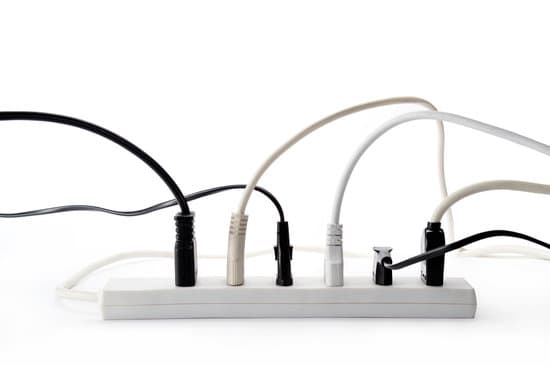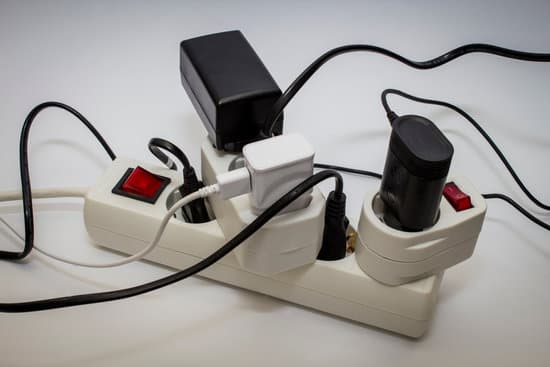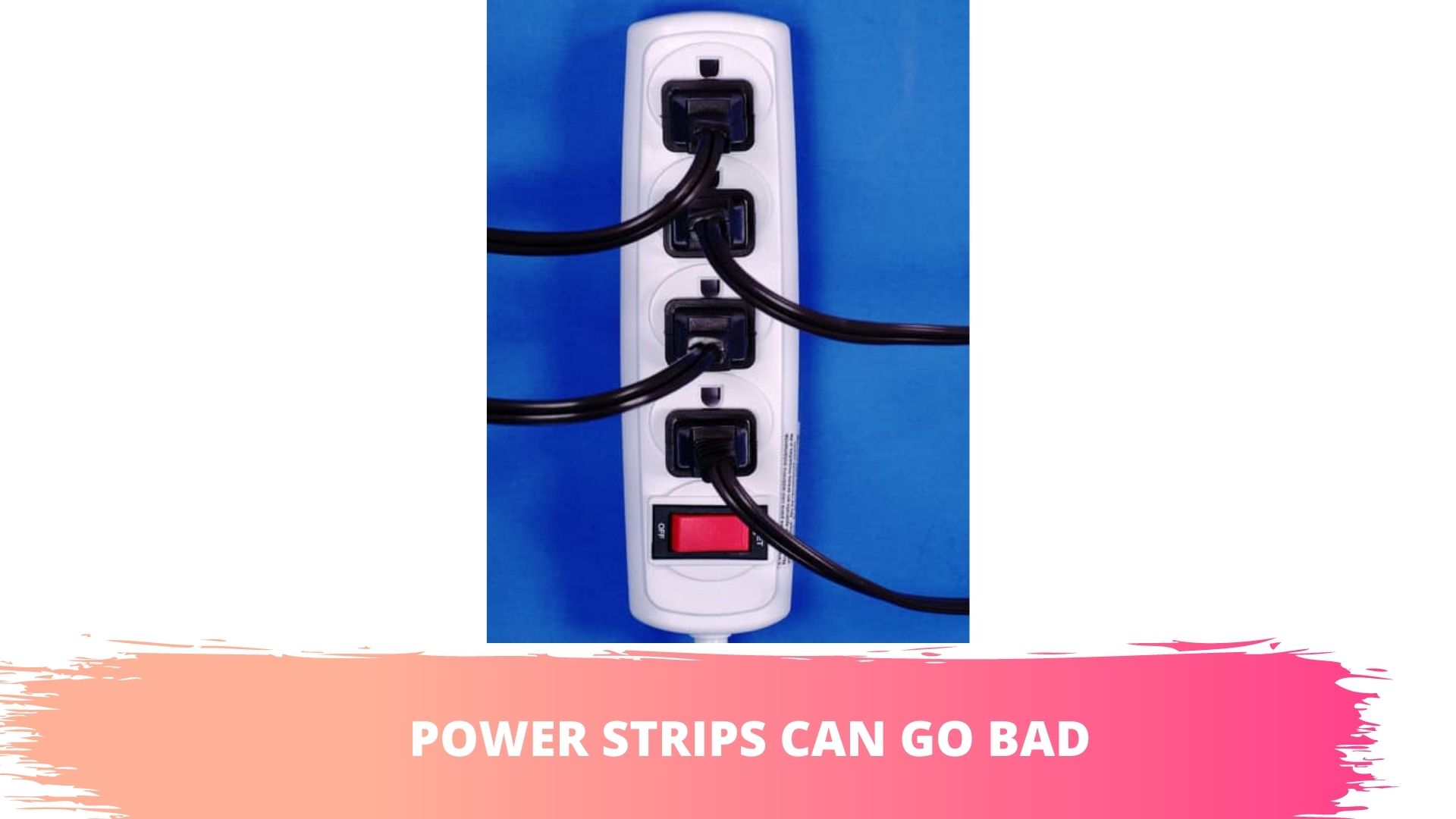Can power strips go bad?
Power strips can go bad. The time it takes them to go bad includes the joule rating, the frequency of thunderstorms in your area, and the placement of your strip’s power cord.
This is the question every homeowner asks, especially individuals whose power strips have surge protection.
Surge protectors are supposed to protect your electronic hardware from dangerous electrical surges. If a surge protector goes bad, it can leave your expensive equipment at the mercy of a surge. You can probably understand why it is so important for consumers to determine whether or not power strips can go bad.
Why Do Power Strips Go Bad?
Even though you are supposed to replace them every three to five years, certain factors can cause your power strip to die earlier than expected, including:
1). Overloading
You can overload a power strip by forcing it to power appliances whose total load exceeds its capacity. In the best-case scenario, an overloaded power strip will stop working. In the worst-case scenario, it will start a fire.
2). Cord Placed Into Traffic Area
According to Techwalla, you can damage the cord of a power strip by placing it in an area with a lot of traffic. Cuts and tears can remove the shielding, exposing the wires beneath and creating a fire and electrocution hazard.
3). Water Can Cause Short Out
Falconer Electronics expects consumers to know that water is a dangerous element. It shouldn’t mix with electricity. If your power strip gets wet, the water can cause it to short out. This is another source of fire and electrocution hazards.
4). Overheating
If the cord is placed in an area with poor ventilation, such as under a carpet or inside a wall, it can overheat, starting a fire.
5). Indoor VS Outdoor Cord
You can ruin an indoor power strip by using it outside. Outdoor power strips are designed to carry more current. They also have far greater insulation that protects them from the elements. If you expose an indoor power strip to the same conditions an outdoor power strip encounters outside, it is unlikely to survive.
6). Surge
An electrical surge can overwhelm both power strips and surge protectors, destroying them immediately or over time.
How To Tell If The Power Strip Is Bad?

The only way to protect your appliances from surges and brownouts is to ensure that you replace dead or worn-out power strips on time. But you can only do this by learning to identify the signs of a bad power strip, which include:
1). Light Flickers Or Dim
Some surge protectors have lights that will stay illuminated so long as the surge protector is functional. When these lights go off, it means that the surge protector is no longer working.
This also applies to lights that are flickering or dim. Some power strips have lights that come on when the power strip stops working. You should study the power strip’s manual to find out what the lights mean.
2). More Age Less Efficiency
The older a power strip gets, the less effective it becomes.
If you can’t remember when you bought your surge protector, you should replace it. If you have had a power strip for several years, I expect you to get a new one.
So if you feel like you have kept your power strip or surge protector for a long time, you should replace it just to be on the safe side.
3). The No of Joules Left
As you now realize, the more surges a surge protector absorbs, the less effective it becomes. But most people have no way of measuring the joules of the surges their circuit encounters which means that they have no way of knowing the number of joules left in the surge protector.
In that regard, many experts expect you to replace your surge protector whenever it takes a hit from a surge. It doesn’t matter if the surge was small. Because you have no way of knowing how much protection is left, you should err on the side of caution and get a new one.
4). Gets Too Hot
Power strips conduct electricity. As such, they are expected to become warm on occasion. But if your power strip feels hot, you should get a new one, especially if it is too hot for you to touch.
I want you to look for burn marks and melted plastic as well. These are signs of overheating.
5). Damages Like Frayed Wires
If the power strip is damaged, you should replace it. If it has frayed wires, burn marks, or discolorations, not to mention broken switches, outlets, and fuses, it has probably gone bad.
6) Crackling Sound and Smell
Can you hear crackling noises? That is a sign of loose wiring. How about the smell? Do you smell ozone? It means that some of the components in the power strip are burnt or melted. Either way, you need a new one.
7). Instability
One of the most common signs of a bad power strip is instability, that is to say, the power strip keeps going on and off. Sometimes, electrical surges are to blame. But in other cases, you have faulty wires in the power strip.
8). Weak Outlets
When you attach your appliances to a power strip, they should remain firm and secure in the power strip’s outlets. Weak sockets and loose plugs are a sign that you need a new power strip.
How Long Do Power Strips Last?

A powerful surge can ruin a brand new power strip in an instant. And even though surge protectors are supposed to defend against surges, lightning strikes can destroy them within seconds.
The average surge protector lasts anywhere between three and five years. Though, it might be safer to replace them every two to three years. This applies to power strips and extension cords. But you have to account for the conditions in your home.
Every surge that a surge protector encounters lowers its lifespan.
The more surges the device absorbs, the faster it wears out.
A surge protector in a home that doesn’t receive surges can remain functional for several years.
Do Power Strips Expire?
Power strips have a limited lifespan. The longer they remain in use, the less effective they become, the more risks they present. It is a relatively common practice for consumers to replace their power strips and extension cords once the warranty lapses.
Manufacturers are not expected to furnish their power strips with expiration dates, which is why you won’t find one on your power strip.
What About Surge Protectors – Do They Expire?
Surge protectors do not last forever. You can estimate the lifespan of your surge protection by subtracting the rating of each surge from the joule rating of the surge protector. Though, it is worth noting that you have no way of knowing the number of joules left in a surge protector.
Surge protectors differ from ordinary power strips. They have components that absorb voltage that has exceeded safe levels, preventing it from reaching and ultimately destroying the appliances attached to their outlets.
They have two different lifespans. The lifespan of their surge protection components is determined by the joule rating.
Energy Today describes the joule rating as the voltage that a surge protector can absorb before its surge protection components stop working.
For instance,
If a surge protector has a rating of 600 joules, a surge worth 100 joules will reduce its protection to 500 joules. If it receives a surge of 500 joules, the device will lose its surge protection altogether.
You should also realize that a surge protector that has lost its surge protection can still operate as an ordinary power strip. It can remain in operation for the same number of years as an ordinary power strip.
Conclusion
Can a Power Strip go bad? Yes, it can. Power strips don’t have expiration dates. But they tend to wear out within 3 to 5 years. If the power strip is a surge protector, the joule rating reveals the lifespan.
The more surges the surge protector absorbs, the weaker its surge protection components become. Some power strips have lights that warn consumers that they have stopped working. But in most cases, you have to look for signs on the power strip which prove that it has gone bad.
This includes the smell of ozone, a buzzing/crackling sound, frayed and exposed wires, overheating, discoloration, weak sockets, etc.

